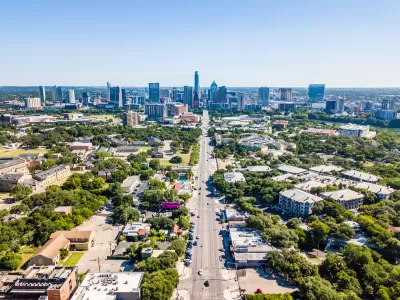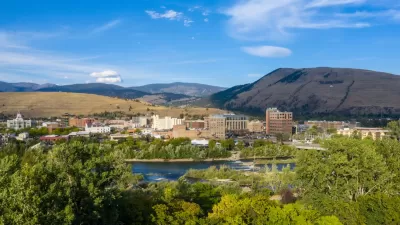Despite heated controversy, some experts believe the zoning changes made last year won’t make a significant dent in the local housing crisis.

In a piece for Forbes, Roger Valdez argues that recent zoning changes made by the city of Austin are “necessary but not sufficient” to increase the city’s housing supply. While local media touted the zoning reforms as a major step toward new housing and higher density, the reality is more nuanced. Regulations like lot size minimums, setbacks, and Floor Area Ratio (FAR) requirements limit the number of new units that can be built. Challenges with surface water management, utility requirements, and financing are other barriers to building as much new housing as advocates envision.
An Austin housing advocate Valdez spoke to said the changes “will not have a massive impact” and few sites will meet the requirements for additional units. “While there was a tremendous amount of work and controversy associated with the changes, they don’t represent an end to single-family zoning, and are unlikely to result in a large increase in production of new housing. When new housing does happen, it is likely to be expensive given the challenges of building.”
For Valdez, the only answer is a wholesale scrapping of the current zoning code. “Without substantial and significant changes in development standards, adding units is not likely to happen at scale; it is simply too challenging to do, permit, finance, and given all the other elements of the zoning and building code, utility requirements, often infeasible.”
FULL STORY: Austin Zoning Changes Necessary But Not Sufficient To Increase Housing

Alabama: Trump Terminates Settlements for Black Communities Harmed By Raw Sewage
Trump deemed the landmark civil rights agreement “illegal DEI and environmental justice policy.”

Planetizen Federal Action Tracker
A weekly monitor of how Trump’s orders and actions are impacting planners and planning in America.

The 120 Year Old Tiny Home Villages That Sheltered San Francisco’s Earthquake Refugees
More than a century ago, San Francisco mobilized to house thousands of residents displaced by the 1906 earthquake. Could their strategy offer a model for the present?

Indy Neighborhood Group Builds Temporary Multi-Use Path
Community members, aided in part by funding from the city, repurposed a vehicle lane to create a protected bike and pedestrian path for the summer season.

Congestion Pricing Drops Holland Tunnel Delays by 65 Percent
New York City’s contentious tolling program has yielded improved traffic and roughly $100 million in revenue for the MTA.

In Both Crashes and Crime, Public Transportation is Far Safer than Driving
Contrary to popular assumptions, public transportation has far lower crash and crime rates than automobile travel. For safer communities, improve and encourage transit travel.
Urban Design for Planners 1: Software Tools
This six-course series explores essential urban design concepts using open source software and equips planners with the tools they need to participate fully in the urban design process.
Planning for Universal Design
Learn the tools for implementing Universal Design in planning regulations.
Clanton & Associates, Inc.
Jessamine County Fiscal Court
Institute for Housing and Urban Development Studies (IHS)
City of Grandview
Harvard GSD Executive Education
Toledo-Lucas County Plan Commissions
Salt Lake City
NYU Wagner Graduate School of Public Service





























